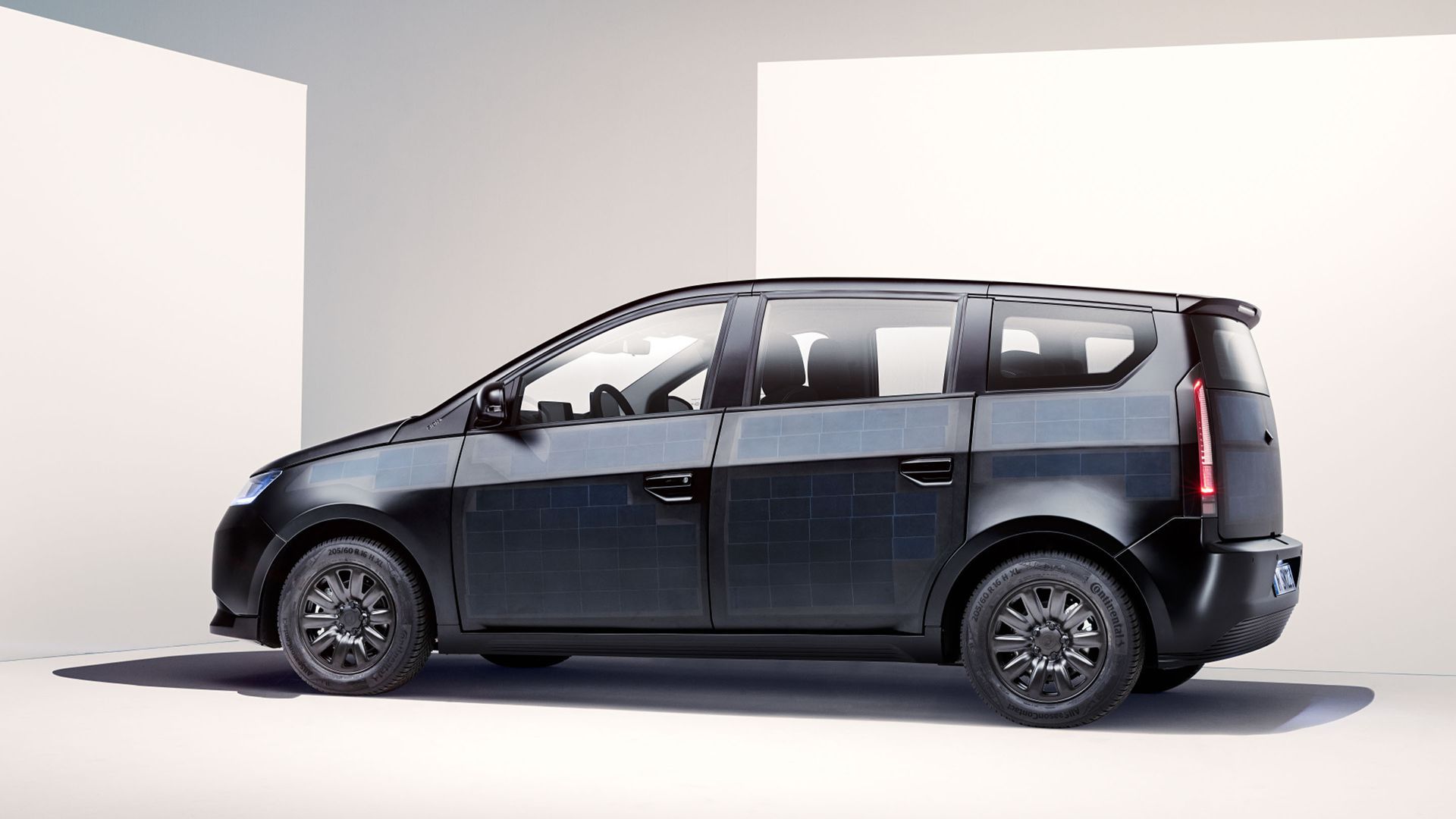| After decades of attempts to power cars with energy from the sun, the solar automotive age might finally be upon us, Joann Muller reports. Why it matters: With climate change accelerating and high gas prices squeezing consumers' budgets, the notion of filling up with free, clean solar energy is certainly enticing. The catch: The amount of solar energy that can be captured by solar panels on a car's roof is limited, which is why the tech has yet to take off. What's new: Germany's Sono Motors may have cracked the code with a $25,000 electric SUV called the Sion. - Instead of a solar glass roof, the Sion has 456 solar cells integrated seamlessly into its plastic hood, fenders, sides, roof and rear panels.
- Together, they provide enough energy to extend the car's 190-mile battery range by an average of 70 miles a week — or up to 150 miles per week in perfect conditions.
- For people with short commutes in sunny locales, that could mean never plugging in again.
Driving the news: Joann checked out the Sion on a recent blustery, overcast day in Detroit during a stop on the car's first U.S. tour. - The conditions were a good reminder of the car's practical limitations. Sono says the sun can account for about 5,400 miles of range per year — about one-third most drivers' yearly average — but that all depends on the season, the weather and even how shady your parking spot is.
How it works: Sono spent five years trying to perfect its patented injection molding process, which integrates monocrystalline silicon cells into the Sion's scratch-resistant, dent-proof polymer panels. - Depending on the time of day and the angle of the sun, different parts of the car capture the sun's energy and feed it to the Sion's 54-kWh lithium-ion phosphate battery.
- Solar aside, the Sion's battery can charge in about 30 minutes when plugged into a DC fast charger, or in a few hours at an ordinary Level 2 charger.
- Even without solar power, the $25,000 Sion is an affordable EV (although it won't qualify for U.S. tax incentives because it's built in Europe).
Sono kept costs low by outsourcing production to Valmet Automotive, a well-known Finnish contract manufacturer — and it only comes in one style, with no optional features. - "You can have any color you want, as long as it's black," quipped chief operating officer Thomas Hausch, paraphrasing Henry Ford's famous comment about the Model T.
- And the company will sell its cars directly to consumers instead of through dealerships.
Be smart: A small handful of other companies, including the California-based Aptera and Dutch startup Lightyear, are also trying to crack the solar-powered EV nut. What to watch: More than 20,000 Europeans have put down a $2,000 refundable deposit, Sono says, and it has another 22,000 orders from fleet customers, including a subscription car service called FINN. - The company says it is "actively evaluating American partnership opportunities" to bring the car stateside.
- Meanwhile, it's already generating revenue from selling solar retrofit kits for heavy trucks and buses.
Share this story. | 








No comments:
Post a Comment